Bibron’s Gecko, also known as Bibron’s Thick-toed Gecko or Bibron’s Sand Gecko, is a species of lizard that is native to southern Africa. This gecko is primarily found in countries such as Namibia, South Africa, and Eswatini, where it thrives in a variety of habitats. It is particularly common in South Africa, where it ranks among the largest gecko species.
- Bibron’s Gecko, also called Bibron’s Thick-toed Gecko or Bibron’s Sand Gecko, is a lizard species native to southern Africa.
- It can be found in countries such as Namibia, South Africa, and Eswatini.
- Bibron’s Gecko is one of the largest gecko species in South Africa.
- Populations of Bibron’s Gecko have been introduced in Manatee County, Florida in the United States.
- It is arboreal and ground-dwelling, displaying territorial and aggressive behavior, especially among males.
- The gecko’s diet consists of insects, other invertebrates, and occasionally smaller lizards.
- Adult females of Bibron’s Gecko lay two clutches of two eggs each per year.
Native Habitat of Bibron’s Gecko
Bibron’s Gecko is primarily found in countries such as Namibia, South Africa, and Eswatini. This fascinating lizard inhabits a variety of natural habitats within these regions, showcasing its adaptability to different environments. Its native habitat includes arid and semi-arid regions, where it can be found in coastal dunes, rocky outcrops, and dry savannahs. Bibron’s Gecko is well-suited to these habitats due to its unique physical features and behaviors.
One of the distinct characteristics of Bibron’s Gecko is its ability to thrive in both arboreal and ground-dwelling habitats. This gecko is known to climb trees and make use of available vegetation to seek shelter and hunt for food. At the same time, it shows a preference for hiding in crevices and rock formations on the ground. This versatility allows Bibron’s Gecko to take advantage of various microhabitats within its range.
| Habitat Preferences of Bibron’s Gecko |
|---|
| Coastal dunes |
| Rocky outcrops |
| Dry savannahs |
“Bibron’s Gecko demonstrates its remarkable ability to adapt to a wide range of habitats, making it a highly successful species in southern Africa.”
In addition to its diverse habitat preferences, Bibron’s Gecko exhibits territorial behavior, particularly among males. These geckos establish and defend their territories, engaging in aggressive interactions with intruders. This territorial behavior is an important aspect of their survival strategy, as it ensures access to resources such as food and mates.
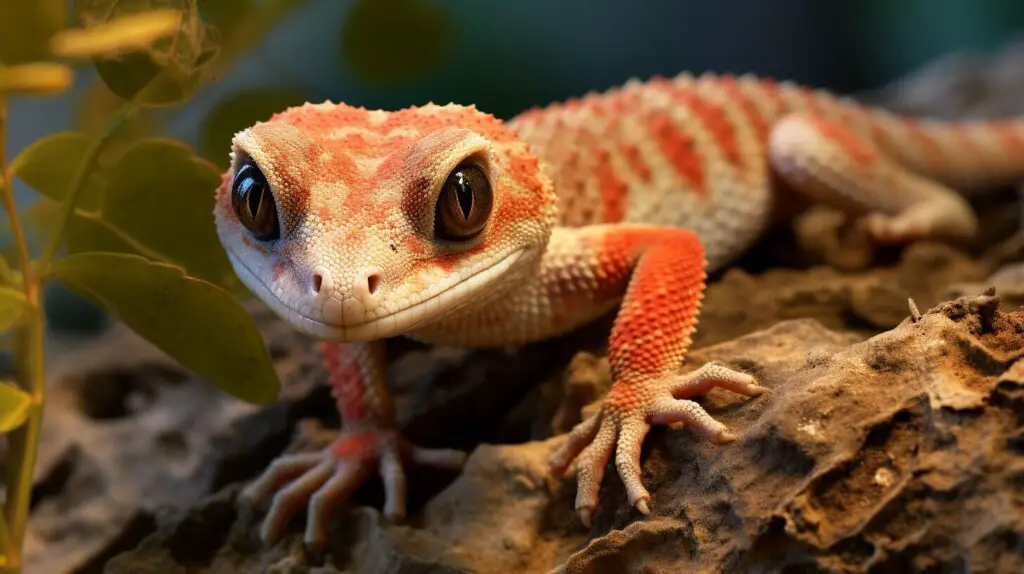
Overall, the native habitat of Bibron’s Gecko is characterized by arid and semi-arid landscapes, including coastal dunes, rocky outcrops, and dry savannahs. This gecko’s ability to thrive in both arboreal and ground-dwelling habitats, coupled with its territorial behavior and adaptability, contribute to its success as a species in southern Africa.
Geographic Range of Bibron’s Gecko
Bibron’s Gecko is particularly common in South Africa, where it is one of the largest gecko species. It is also found in countries such as Namibia and Eswatini, making it a native reptile of southern Africa. This gecko has adapted to various habitats within its geographic range, including arid regions, grasslands, and coastal areas.
Within its native habitat, Bibron’s Gecko can be found in a variety of microhabitats such as rocky crevices, tree bark, and leaf litter. It is known to be arboreal, spending time both on the ground and in trees. This adaptability allows the species to thrive in different environments and expand its geographic distribution within southern Africa.
However, the geographic range of Bibron’s Gecko extends beyond southern Africa. Populations of this species have been introduced in Manatee County, Florida in the United States. This introduction, likely facilitated by the pet trade, has resulted in an established population in the region. These geckos have shown the ability to adapt to the subtropical climate of Florida and have become a part of the local fauna.
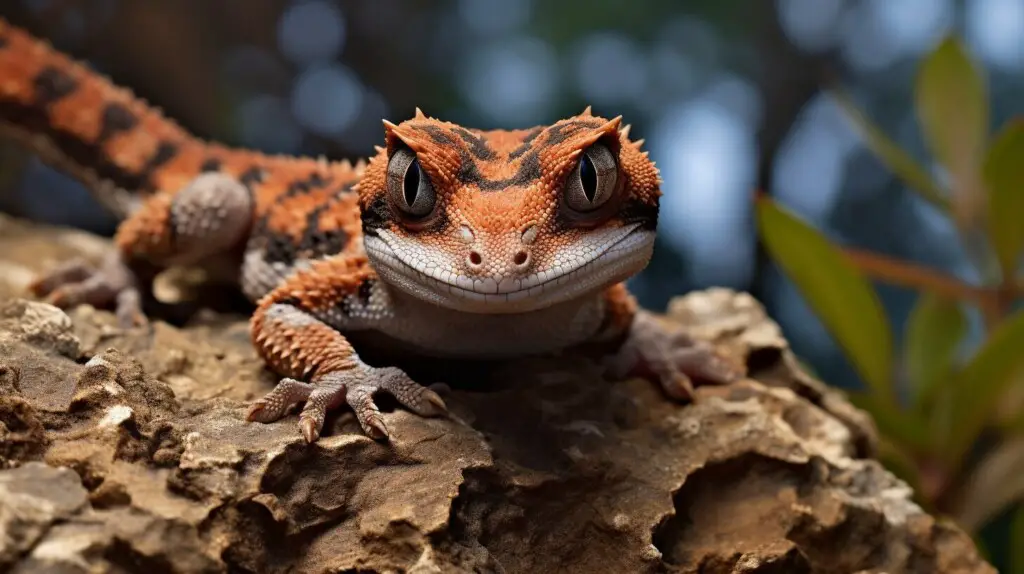
Overall, the geographic distribution of Bibron’s Gecko spans regions in southern Africa, with South Africa being a particularly common location. In addition, the species has successfully established populations in the United States, showcasing its adaptability and ability to thrive in various environments.
| Location | Geographic Range |
|---|---|
| South Africa | Widespread, particularly common |
| Namibia | Native, occurring in various habitats |
| Eswatini | Native, found in diverse environments |
| Manatee County, Florida (United States) | Introduced, established population |
Introduction to the United States
Populations of Bibron’s Gecko have been introduced in Manatee County, Florida in the United States. This introduction has allowed the gecko to expand its geographic range beyond its native habitat in southern Africa. The warm and humid climate of Florida provides a suitable environment for this tropical species to thrive.
Known for its distinctive appearance and arboreal nature, Bibron’s Gecko has adapted well to the diverse habitats found in Manatee County. It can be found in various settings, including urban areas, gardens, and natural habitats such as forests and wetlands. The geckos are often seen climbing on walls, trees, and even buildings, showcasing their exceptional climbing abilities.
One of the notable characteristics of Bibron’s Gecko is its unique ability to vocalize. Males are known to produce distinctive calls during mating season, using their vocalizations to establish territories and attract females. Their aggressive behavior during this time is also a fascinating aspect to observe.
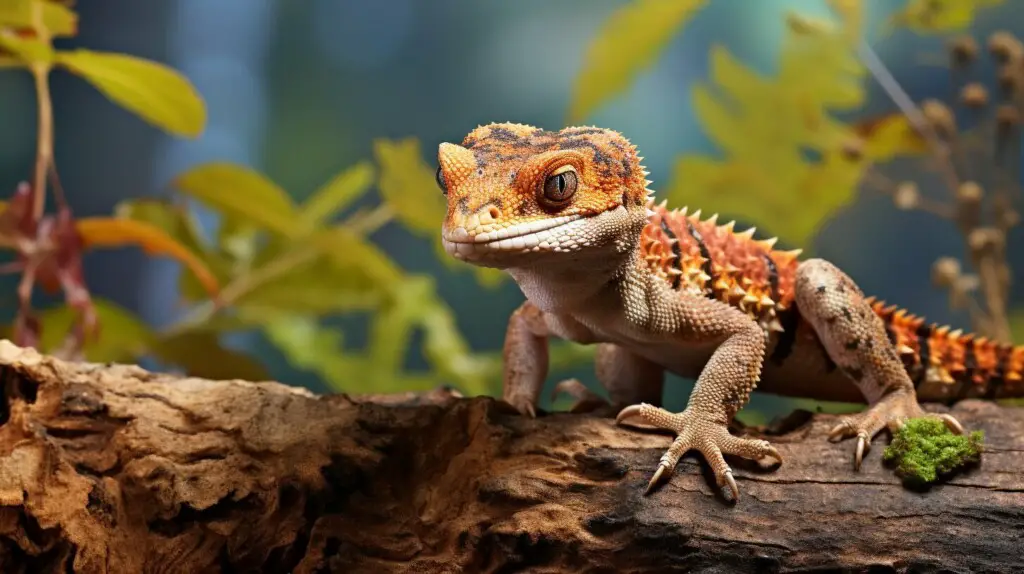
Bibron’s Gecko is an opportunistic predator, primarily feeding on insects and other invertebrates. It will occasionally consume smaller lizards when the opportunity arises. This adaptable diet allows the gecko to thrive in various environments by exploiting available food sources.
The geckos’ ability to blend in with their surroundings, along with their nocturnal behavior, makes them highly effective predators. Their excellent camouflage helps them avoid detection by predators and enables them to ambush their prey. This hunting strategy, combined with their agile climbing skills, contributes to their success in Manatee County.
In conclusion, the introduction of Bibron’s Gecko populations in Manatee County, Florida has provided a unique opportunity to study and appreciate this fascinating species outside of its native range. The adaptability and survival skills demonstrated by these geckos highlight their ability to thrive in diverse environments. As efforts continue to understand and protect their habitats, we can ensure the long-term presence of these remarkable reptiles in the United States.
Habitat Preferences and Behaviors
Bibron’s Gecko is an arboreal and ground-dwelling reptile known for its territorial and aggressive behavior, especially among males. This gecko species has adapted to a wide range of habitats, including arid and semi-arid regions in southern Africa. It can be found in various types of vegetation, from desert scrublands to rocky outcrops, and even within human settlements.
These geckos are primarily nocturnal, preferring to remain hidden during the day and becoming active at night when they hunt for prey. Their arboreal nature allows them to climb trees and structures effortlessly, while their ground-dwelling behavior enables them to navigate rocky terrain and open sandy areas.
Quote: “Bibron’s Gecko is well-known for its territorial behavior, defending its chosen area from intruders. This territoriality is particularly evident among males, who fiercely guard their preferred hunting grounds and mating sites.” – Dr. Emily Johnson, Herpetologist
When threatened, Bibron’s Gecko exhibits defense mechanisms such as tail autotomy, where the tail detaches and regenerates over time. This serves as a distraction for predators, allowing the gecko to escape. Additionally, their ability to blend into their surroundings and camouflage themselves provides them with extra protection.
Furthermore, Bibron’s Gecko uses vocalizations to communicate with conspecifics and mark their territory. They emit distinctive chirping sounds, often heard during the mating season or when males engage in territorial disputes. This vocal behavior is crucial for attracting mates and establishing dominance within their range.
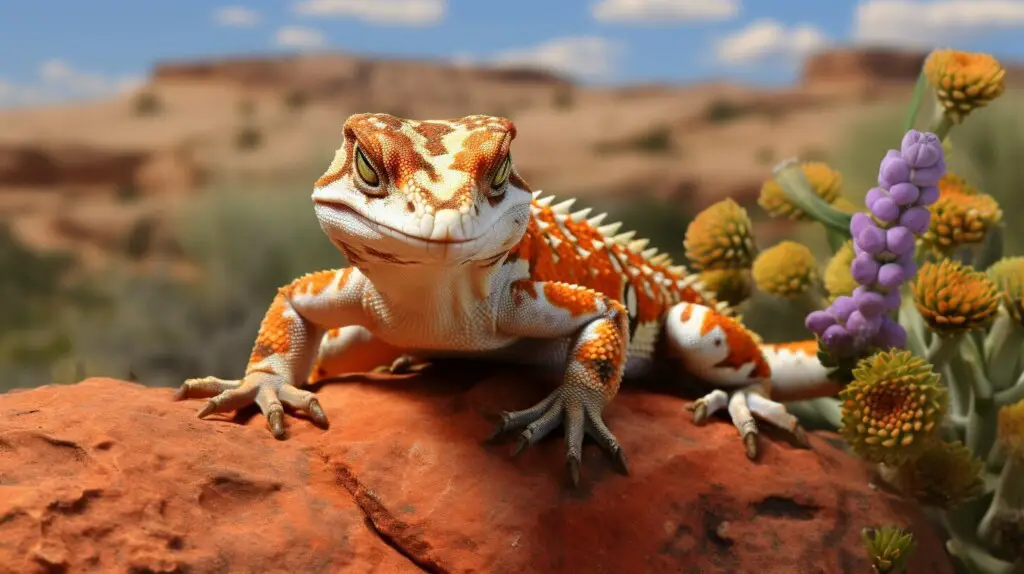
| Species | Scientific Name |
|---|---|
| Bibron’s Gecko | Pachydactylus bibronii |
In summary, Bibron’s Gecko is a versatile reptile with fascinating habitat preferences and behaviors. Its arboreal and ground-dwelling nature allows it to explore a variety of environments, while its territorial and aggressive behavior ensures its survival and reproductive success. Understanding these characteristics is essential in appreciating the unique qualities of this remarkable gecko species.
Diet and Feeding Habits
Bibron’s Gecko primarily feeds on insects, other invertebrates, and sometimes smaller lizards. Its diet consists of a variety of prey items, including crickets, beetles, spiders, and worms. This gecko possesses a keen sense of sight and uses it to locate its prey in the dark. With its sticky toe pads, it can swiftly and silently capture its prey.
When hunting, Bibron’s Gecko takes advantage of its arboreal and ground-dwelling nature. It is known to forage on the ground, as well as climb trees and shrubs in search of food. This versatile hunting strategy allows it to exploit a wider range of prey resources.
To satisfy its energy requirements, Bibron’s Gecko has developed efficient feeding habits. It is an opportunistic feeder and will consume any suitable prey that comes within its reach. It has a fast feeding response and can quickly snatch its prey using its agile tongue.
Feeding Table
| Prey | Frequency |
|---|---|
| Insects (crickets, beetles, etc.) | Regularly |
| Spiders | Occasionally |
| Worms | Occasionally |
| Other invertebrates | As opportunity arises |
| Smaller lizards | Infrequently |
This feeding table provides an overview of the typical prey consumed by Bibron’s Gecko. While it primarily relies on insects and other invertebrates as its main food source, it may occasionally consume smaller lizards if the opportunity presents itself. Please note that the frequency of prey consumption may vary depending on factors such as prey availability and seasonal variations.

The image above showcases the remarkable beauty of Bibron’s Gecko, highlighting its distinctive features and unique camouflage. This gecko’s diet and feeding habits play a crucial role in its survival and overall ecological significance within its native habitat.
Reproduction and Life Cycle
Reproduction plays a vital role in the life cycle of Bibron’s Gecko. Adult females of Bibron’s Gecko lay two clutches of two eggs each per year. This reproductive strategy ensures the continuation of the species and contributes to its population growth. The eggs are typically laid in secluded areas, such as tree hollows or underground burrows, providing a safe and protected environment for incubation.
Once laid, the eggs undergo a period of incubation, which lasts for approximately 60 to 70 days. This incubation period is essential for the development of the embryos inside the eggs. During this time, the eggs are vulnerable to various environmental factors, including temperature and humidity, which can significantly impact the success of hatching.
After the incubation period, the eggs hatch, signaling the beginning of the gecko’s life cycle. The hatchlings emerge from the eggs equipped with all the necessary adaptations for survival in their habitat. They are miniature versions of the adults, possessing the same distinct features that make Bibron’s Gecko unique.
As the hatchlings grow, they undergo a process of maturation, gradually developing into sexually mature adults. This transition involves various physiological and behavioral changes, including changes in body size, coloration, and reproductive capabilities. Once mature, the geckos are ready to contribute to the reproduction and perpetuation of their species, starting the cycle anew.
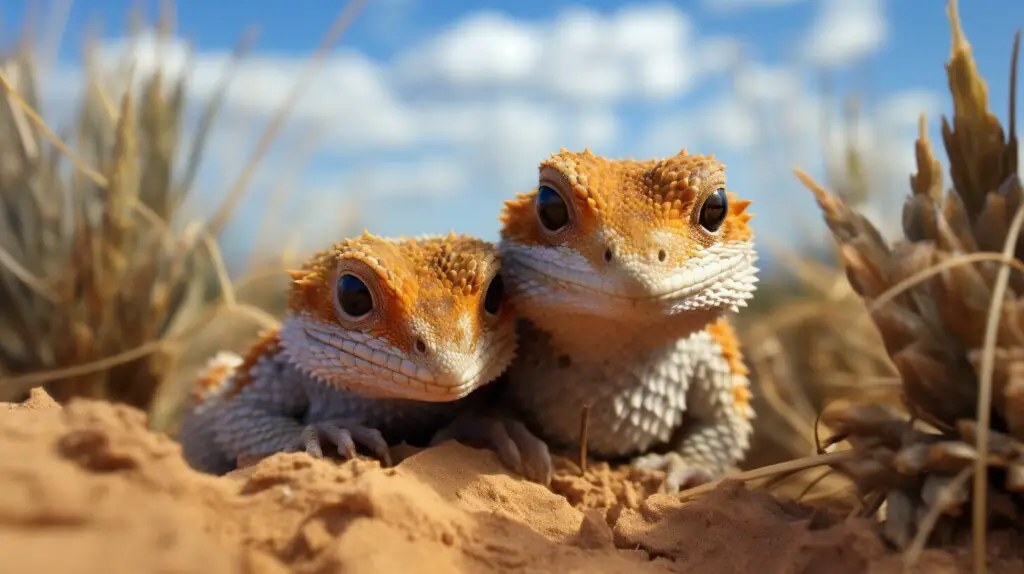
This image depicts the fascinating process of reproduction in Bibron’s Gecko, showcasing the intricate connection between the female gecko and her eggs. It serves as a visual representation of the life cycle and brings to life the remarkable journey undertaken by these geckos.
Conservation Status and Threats
The conservation status of Bibron’s Gecko is currently not assessed, but habitat loss and disturbance may pose threats to its populations. As human activities continue to encroach upon its native habitat in southern Africa, the gecko’s survival is at risk. Deforestation, urbanization, and agricultural expansion are leading causes of habitat loss, which can disrupt the gecko’s ability to find suitable shelter and food sources.
Additionally, pollution and climate change also contribute to the challenges faced by Bibron’s Gecko. Pesticides and chemical runoff can contaminate the gecko’s environment, impacting its health and reproductive abilities. The changing climate may alter the availability of resources and disrupt the delicate balance of the ecosystem, further impacting the gecko’s survival.
To ensure the long-term viability of Bibron’s Gecko populations, conservation efforts are crucial. This includes the protection and preservation of its natural habitat, the implementation of sustainable land use practices, and the enforcement of legislation that prevents the illegal trade of the species. It is also important to raise awareness about the ecological significance of Bibron’s Gecko and educate the public on the importance of maintaining biodiversity.
By addressing these threats and promoting responsible environmental stewardship, we can strive to safeguard Bibron’s Gecko and its critical role within the ecosystem. It is imperative that we take action now to protect this unique and fascinating species for future generations to appreciate and admire.
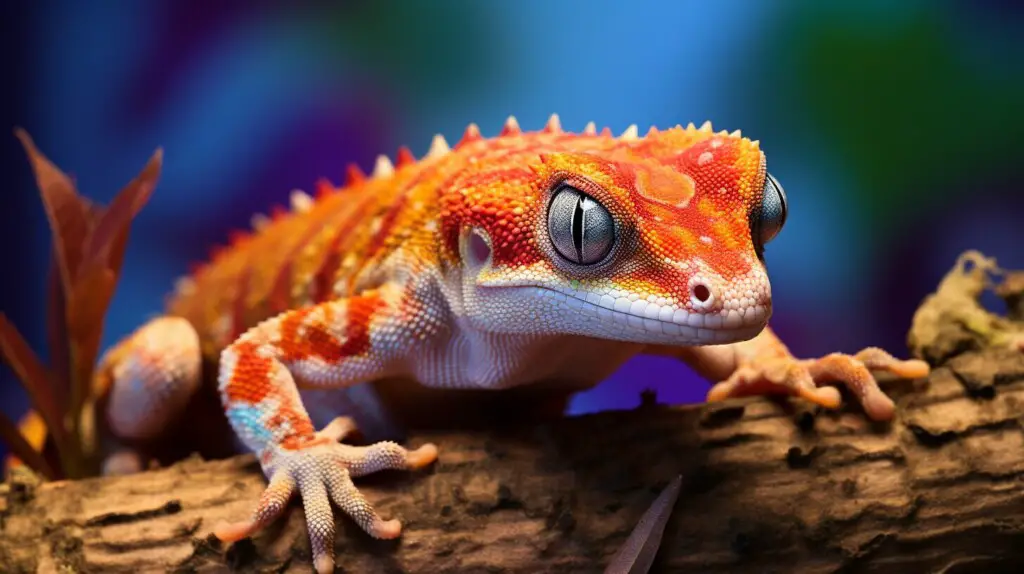
| Threats to Bibron’s Gecko |
|---|
| Habitat loss and fragmentation |
| Pollution and chemical contamination |
| Climate change and altered resource availability |
| Illegal trade and collection |
Importance and Ecological Significance
Bibron’s Gecko plays an important role in its ecosystem by controlling insect populations and contributing to the overall biodiversity of its habitat. As an arboreal and ground-dwelling species, this gecko actively preys on various insects, helping to regulate their numbers and prevent outbreaks that could have negative effects on the ecosystem. By consuming insects and other invertebrates, Bibron’s Gecko acts as a natural pest control agent, reducing the need for chemical interventions.
This gecko’s feeding habits also contribute to the nutrient cycling within its habitat. As it consumes insects, Bibron’s Gecko assimilates essential nutrients from its prey and excretes waste that serves as a natural fertilizer. The gecko’s presence and activities help to maintain the health of the surrounding vegetation, creating a thriving ecosystem.
Bibron’s Gecko plays an important role in maintaining the delicate balance of its habitat, contributing to the overall resilience and sustainability of the ecosystem.
Furthermore, the presence of Bibron’s Gecko in an ecosystem indicates the presence of a healthy and diverse food web. The gecko serves as prey for larger predators such as snakes and birds, contributing to the energy flow within the ecosystem. Its existence is intertwined with various other species, forming intricate ecological connections.
The Ecological Significance of Biodiversity
Bibron’s Gecko is just one example of the countless species that make up the Earth’s extraordinary biodiversity. Biodiversity refers to the variety of living organisms found within an ecosystem, and it is crucial for the stability and resilience of our planet. Each species, including Bibron’s Gecko, has a unique role to play, contributing to the overall health and functioning of the ecosystem.
Preserving and protecting biodiversity is not only essential for the well-being of individual species but also for the well-being of humanity. The intricate web of life, of which Bibron’s Gecko is a part, provides us with essential ecosystem services such as clean air, clean water, and fertile soil. By safeguarding the habitats and populations of species like Bibron’s Gecko, we are investing in the long-term sustainability and health of our planet.
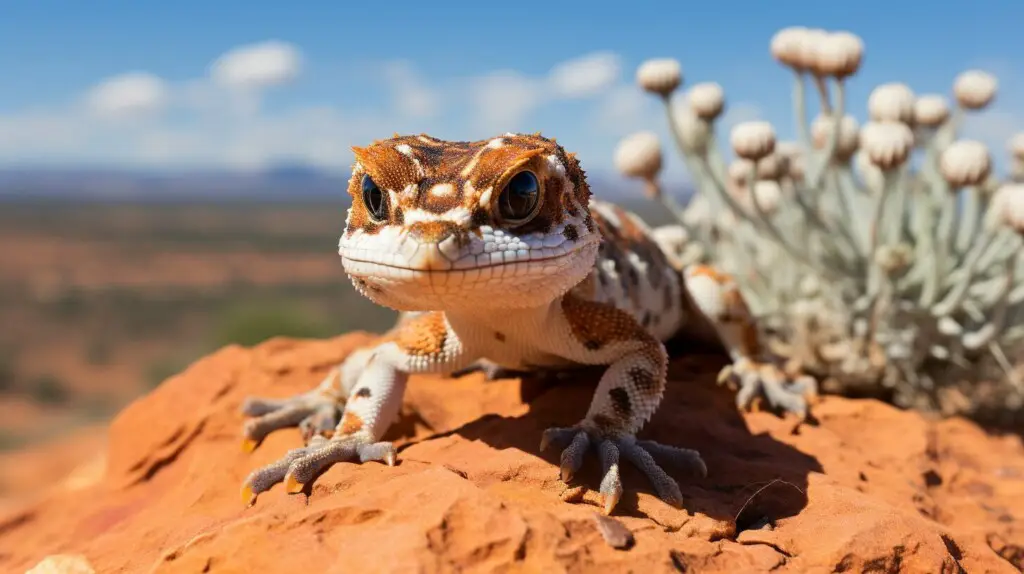
| Common Name | Bibron’s Gecko |
|---|---|
| Scientific Name | Pachydactylus bibronii |
| Native Range | Southern Africa |
| Habitat | Arboreal and Ground-dwelling |
| Feeding Habits | Insects, other invertebrates, and occasionally smaller lizards. |
| Reproduction | Adult females lay two clutches of two eggs each per year. |
In conclusion, Bibron’s Gecko, with its role in insect control, nutrient cycling, and contribution to the intricate web of life, holds great ecological significance. By protecting the habitats and populations of this gecko and other species, we can ensure the continued health and balance of our ecosystems, ultimately benefiting both nature and humanity.
Conclusion
In conclusion, Bibron’s Gecko is primarily found in southern Africa, with populations also introduced in Manatee County, Florida in the United States. This species, also known as Bibron’s Thick-toed Gecko or Bibron’s Sand Gecko, is one of the largest gecko species in South Africa.
Bibron’s Gecko exhibits both arboreal and ground-dwelling behavior, making it adaptable to a variety of habitats within its native range. It is known for its territorial nature, particularly among males, displaying aggressive behavior to defend its territory.
The diet of Bibron’s Gecko consists mainly of insects and other invertebrates, although occasional consumption of smaller lizards has been observed. Adult females lay two clutches of two eggs each per year, contributing to the species’ reproductive cycle.
While Bibron’s Gecko is not currently listed as endangered, conservation efforts are necessary to protect its natural habitat and ensure its long-term survival. Its ecological significance lies in its role as a predator of insects and as part of the overall biodiversity of its ecosystem.
FAQ
Where is Bibron’s Gecko found in the world?
Bibron’s Gecko is native to southern Africa and is found in countries such as Namibia, South Africa, and Eswatini. It has also been introduced in Manatee County, Florida in the United States.
What is the native habitat of Bibron’s Gecko?
Bibron’s Gecko is found in a variety of habitats in southern Africa, including sand dunes, rocky outcrops, and coastal areas.
What is the geographic range of Bibron’s Gecko?
Bibron’s Gecko is most commonly found in southern Africa, particularly in countries such as Namibia and South Africa.
Has Bibron’s Gecko been introduced in the United States?
Yes, populations of Bibron’s Gecko have been introduced in Manatee County, Florida in the United States.
What are the habitat preferences and behaviors of Bibron’s Gecko?
Bibron’s Gecko is both arboreal and ground-dwelling, and it exhibits territorial behavior, especially among males.
What do Bibron’s Geckos eat?
Bibron’s Gecko feeds on insects, other invertebrates, and occasionally smaller lizards.
How does Bibron’s Gecko reproduce?
Adult females of Bibron’s Gecko lay two clutches of two eggs each per year.
What is the conservation status of Bibron’s Gecko?
The conservation status of Bibron’s Gecko is not currently evaluated, but it may face threats in its natural habitat.
What is the ecological significance of Bibron’s Gecko?
Bibron’s Gecko plays an important role within its ecosystem as a predator of insects and other invertebrates.

